
Полная версия
Английский для военных/Military English. Метод кейсов/Cases. Решения, ответы, словарь, глоссарий

Английский для военных/Military English. Метод кейсов/Cases
Решения, ответы, словарь, глоссарий
Марина Юрьевна Грабарь
© Марина Юрьевна Грабарь, 2020
ISBN 978-5-4498-8175-5
Создано в интеллектуальной издательской системе Ridero
ПРЕДИСЛОВИЕ
Для преподавателей английского языка или самостоятельной работы студентов.
Уровень английского B2.
Метод кейсов. Метод конкретных ситуаций – техника обучения, использующая описание реальных ситуаций. Обучающиеся должны исследовать ситуацию, разобраться в сути проблем, предложить возможные решения и выбрать лучшие из них.
Военный английский – это изучение и практика английского языка в контексте армии 21 века. Аутентичные материалы представляют реальные источники. В конце каждой темы есть раздел «Ключевые понятия и словарь», чтобы каждый учащийся мог ознакомиться с конкретной военной терминологией и информацией. В каждом кейсе есть все, что вам нужно. Решения, ответ, ключ. Кейсы организованы в четыре группы. Каждый из них может быть прочитан, обсуждён и использован для одной главной цели; и каждый может быть прочитан, обсуждён, и использован, чтобы понять сложность и поведение человека в различных ситуациях. Кейсы помогают преобразовать информацию и примеры в тексте в реальные знания. Предоставлены все ресурсы.
The cases in this book all deal with specific situations, specific problems, specific decisions.
They are all military situations, military problems, and military decisions.
They should thus be approached by students and instructors as cases that ask,
How should one handle this?
What is Military English?
Military English is the study and practice of the English language in the context of the
Military. The authentic materials were selected from real sources being re-written with a more appropriate level of grammar and vocabulary.
At the end of each unit, there is a vocabulary section
so as each student could review the specific military terminology and the information.
All cases have everything you need. Solutions, Answer Key.
.Как пользоваться данной книгой.
Кейс (от англ. сase) – это описание конкретной ситуации или случая в какой-либо сфере: социальной, экономической, медицинской и т. д. Как правило, кейс содержит не просто описание, но и некую проблему или противоречие и строится на реальных фактах.
Соответственно, решить кейс – это значит проанализировать предложенную ситуацию и найти оптимальное решение.
Кейс-метод позволяет совершенствовать «мягкие навыки» (soft skills),которые оказываются крайне необходимы в реальном рабочем процессе.
Сейчас решение кейсов как метод обучения используется во всех ведущих бизнес-школах, университетах и корпорациях.
Решение кейсов состоит из нескольких шагов:
1) исследования предложенной ситуации (кейса);
2) сбора и анализа недостающей информации;
3) обсуждения возможных вариантов решения проблемы;
4) выработки наилучшего решения.
Как пишутся кейсы
Кейс объединяет в себе два компонента: исследовательский и учебный, поэтому процесс его создания предполагает работу консультанта (я как технический специалист), сертификаты :
– NATO CIMIC AWARENESS COURSE. Информационная подготовка. Civil-Military Cooperation Centre of Excellence (CCOE). Центр подготовки НАТО
– Основы контроля оружия. Химическое, биологическое, ядерное оружие тип1, ядерное оружие тип 2.EU Non-Proliferation Consortium. Консорциум Еевропейского Союза
и преподавателя одновременно (Международные квалификации TESOL, TEFL (право преподавать английский как иностранный в любой стране мира, следуя при этом современной коммуникативной методике).
Задача коммуникативной методики – научить спонтанной речи на любые темы, и перестать переводить мысли с русского на иностранный язык. Коммуникативный подход, в общем и целом, предполагает изучение слов в контексте, без перевода на русский язык. И задача преподавателя не только научить Вас понимать, ЧТО означает слово, но и КАК его употреблять.
PART 1
MILITARY LEADERSHIP STYLECASE NUMBER 1State Loses Control Over Its Nuclear Weapons Illustrative Scenario:
The Democratic People’s Republic of Korea (DPRK) DPRK Nuclear, Chemical, Biological, and Missile Sites
The DPRK’s WMD and missile programs include approximately 141 sites (excluding tactical sites) identified as being of potential interest for WMD-E operations, 39 of which are associated with its nuclear program, 38 are related to its CW program, and 15 are related to its bioweapons (BW) program. An additional 49 sites are associated with the ballistic missiles that might launch WMD.
For WMD-E operations, we assess that the order of priority of these sites would be:
– Nuclear fuel enriching and processing sites, and nuclear weapon manufacturing, testing, and storage sites
– Missile garrisons holding missiles capable of carrying nuclear weapons
– Research and development sites and nuclear-related universities
– Other nuclear sites – including mines, low-grade ore processing
– Biological weapons research and development, manufacturing, testing, and storage sites
– CW research and development, manufacturing, testing, and storage sites.
Unclassified sources identify nine sites in the DPRK that fall into the first category: Yongbyon Nuclear Research Center, one nuclear test site, four additional undeclared nuclear enrichment sites, one suspected underground nuclear storage site, one undeclared underground enrichment and reprocessing site, and one site associated with nuclear weaponization. These nine nuclear sites are shown in Figure 1.1.
The figure also depicts a notional buffer line that might be established by Chinese forces—50 km in this example – in the event that China decides to establish a zone within North Korea to control the flow of refugees or otherwise manage further developments on the peninsula. An interesting feature of such a zone would be the number of priority WMD and missile sites remaining outside it. In this notional case, five nuclear and seven missile sites would remain on the U.S. side.
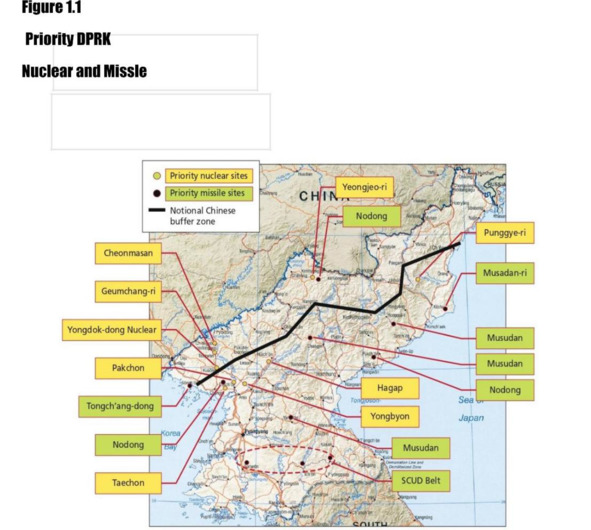
A key operational decision – and one that will be greatly affected by the quality of available intelligence – will be whether and in what priority to seize and reduce each site. The combined commander/JFC would then develop a campaign plan to exploit these and any other sites found during the course of operations.Table 1.1
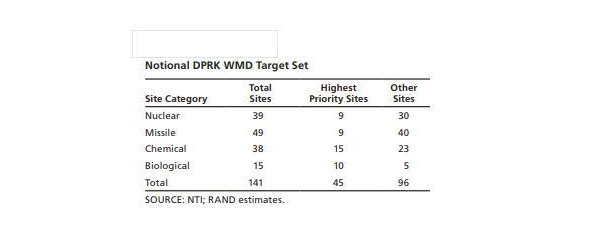
Table 1.2
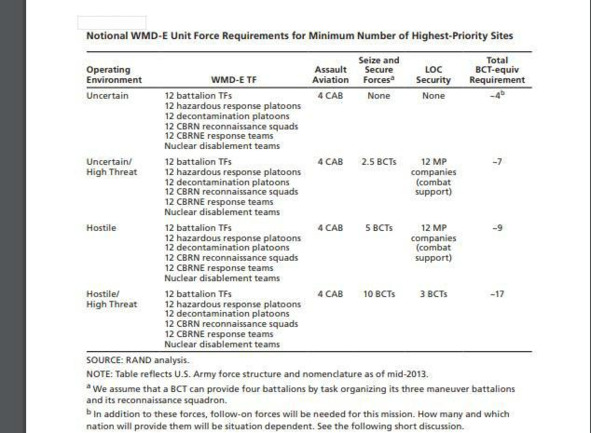
Table 1.3
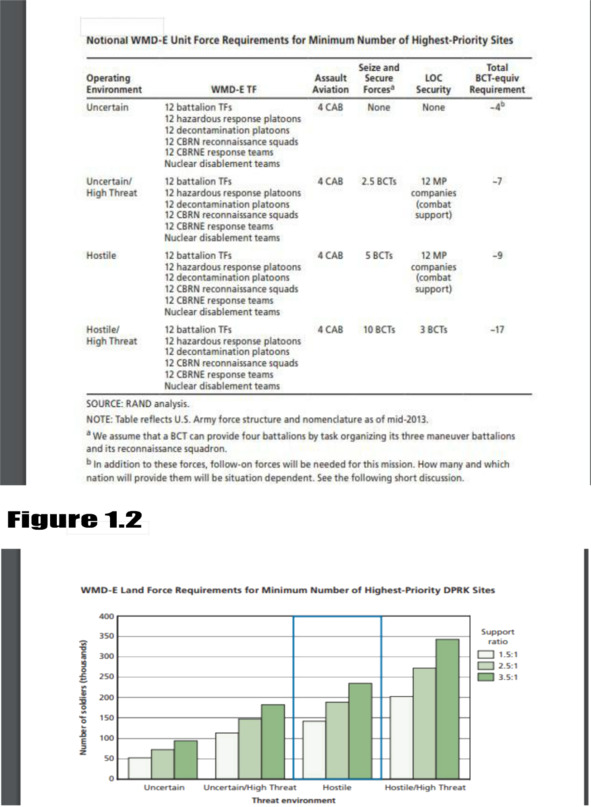
Questions
– Campaign Design
A WMD-E campaign would balance key objectives and missions; strategic, operational, and tactical risks; and the joint forces needed to interdict, attack, and/or eliminate nuclear forces and sites quickly enough to minimize the risks of proliferation or use. The WMD-E maneuver scheme could adopt one or a combination of the following approaches:
– a northward movement of U.S. ground forces and RoK allies across the DMZ along one or more axes of advance; (2) the introduction of forces from the sea on one or both coasts to reduce the distances that ground forces need to advance to reach priority nuclear WMD sites; and/or (3) air maneuver operations involving airborne or air assault forces directly assaulting the highest-priority sites, with other ground forces maneuvering to meet up with these forces, and joint SOF, air, and naval forces supporting.
– Intelligence Requirements.
The quality and reliability of U.S. intelligence will be critical in winnowing the number of sites to be initially assaulted, seized, and secured down to those that will best reduce the risk of WMD being leaked or employed.
For example, poor intelligence can result in forces being sent to seize and secure sites bereft of WMD
Very good intelligence could, in theory, reduce the number of sites requiring coverage, support the efficient allocation of limited resources, and reduce risk. (In practice, however, North Korean efforts to hide weapons and disguise sites may significantly diminish the effectiveness of U.S. and allied intelligence.)
Two intelligence issues complicate planning for the WMD-E mission.
– First, intelligence gaps will likely mean that critical facilities rumored or reported to exist cannot be located.
– Second, as previously noted, many weapons – particularly CWs – are likely to have been dispersed to numerous tactical operational sites that cannot be identified in advance and are not included in estimates of a country’s WMD infrastructure.
3. Parametric Analyses of WMD-E Force Requirements
We estimated WMD-E forces under different scenario assumptions that varied the following parameters:
1 • the number and sizes of WMD sites for WMD-E operations
2• force requirements dictated by the operational environment
3• the ratio of supporting forces to mission forces.
– Sensitivity of Force Requirements to Operational Environments and Support Ratios The ground force requirements are presented as a function of the operating environment (Uncertain or Hostile, and level of threat) and the assumed support ratio (low, midlevel, or high), broken out by the different elements of the WMD-E mission force.
Ground force requirements for WMD-E operations in our illustrative DPRK case are presented in Figure 1.2.
Estimated forces needed for WMD-E operations could be…
5. Observations on the DPRK Case Study
As described in this case study, WMD-E operations in the wake ofa collapse ofthe DPRK.
– What are the assumptions driving results?
– What does Your results suggest?
Welcome To The DPRK (Video)
https://drive.google.com/file/d/1YRUncnqAJ7YDe_N8UeRdpGOwFQZq KDwy/view? usp=sh aring
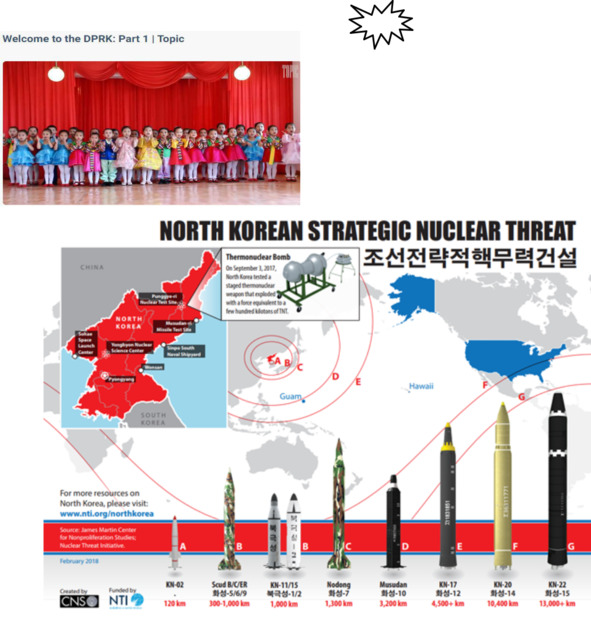

Solutions
Question 11. Campaign DesignA WMD-E campaign would balance key objectives and missions; strategic, operational, and tactical risks; and the joint forces needed to interdict, attack, and/or eliminate nuclear forces and sites quickly enough to minimize the risks of proliferation or use.
The WMD-E maneuver scheme could adopt one or a combination of the following approaches:
– a northward movement of U.S. ground forces and RoK allies across the DMZ along one or more axes of advance; (2) the introduction of forces from the sea on one or both coasts to reduce the distances that ground forces need to advance to reach priority nuclear WMD sites; and/or (3) air maneuver operations involving airborne or air assault forces directly assaulting the highest-priority sites, with other ground forces maneuvering to meet up with these forces, and joint SOF, air, and naval forces supporting.
Answer
Each of the three approaches listed above involves associated benefits and risks.
For example, a northward advance would establish secure areas for elimination operations but could also be quite slow, and such an advance could well face the greatest concentration of opposing DPRK forces – hence, the highest casualties, especially if those DPRK forces had the ability and will to fight.
The approach based on operationally maneuvering from the sea could also face stiff opposition, and it would introduce some logistical challenges, but it would also shorten the distances – and potentially the time – that maneuver and WMD-E TFs have to advance to key DPRK nuclear and missile sites in the north.

Finally,
Figure 1.1
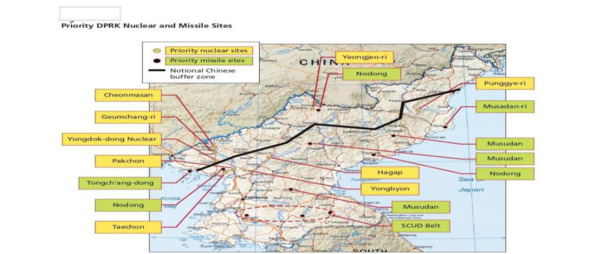
might be the fastest way to seize DPRK nuclear sites until the WMD-E TFs arrive, but this approach could leave the assault forces exposed and isolated. Trade-offs between risks and timelines also exist:
Some risks might be mitigated, for example, by conducting heliborne assault opera-tions against a site only when heavier ground maneuver forces are closing on that site so that assaulting forces can be quickly reinforced.
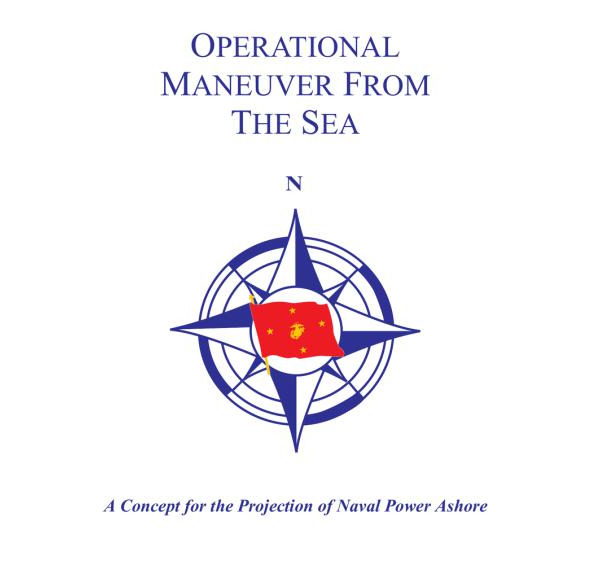
Question 2
2. Intelligence Requirements.
The quality and reliability of U.S. intelligence will be critical in winnowing the number of sites to be initially assaulted, seized, and secured down to those that will best reduce the risk of WMD being leaked or employed.
For example, poorintelligence can result in forces being sent to seize and secure sites bereft of WMD
Very good intelligence could, in theory, reduce the number of sites requiring coverage, support the efficient allocation of limited resources, and reduce risk. (In practice, however, North Korean efforts to hide weapons and disguise sites may significantly diminish the effectiveness of U.S. and allied intelligence.)
Twointelligence issues complicate planning for the WMD-E mission.
– First, intelligence gaps will likely mean that critical facilities rumored or reported to exist cannot be located.
– Second, as previously noted, many weapons – particularly CWs – are likely to have been dispersed tonumerous tacticaloperationalsites that cannot be identified in advance and are not included in estimates of a country’s WMD infrastructure.
Answer
For the WMD-E mission in North Korea, even in a DPRK collapse scenario, forces searching for WMD will not know what type of resistance they might encounter. TFs should consist, therefore, of both WMD specialists and general-purpose forces that are adequate for the potential threat and tactical situation. This could be a significant consideration given the nature of North Korea’s armed forces and the degree to which its population is armed and indoctrinated to fear and distrust U.S. and RoK forces.
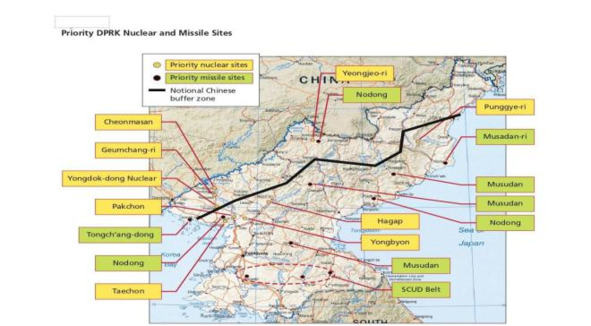
Figure 1.1
Question 3
3. Parametric Analyses of WMD-E Force Requirements
We estimated WMD-E forces under different scenario assumptions that varied the following parameters:
1 • the number and sizes of WMD sites for WMD-E operations
2• force requirements dictated by the operational environment
3• the ratio of supporting forces to mission forces.
Answer
1.The number and sizes of WMD sites for WMD-E operations.
For WMD- E operations, we assess that the nuclear sites associated with fuel enriching and processing would be the next priorities, along with nuclear weapon manufacturing, testing, and storage sites. For our base case, we selected 12 battalion TFs as the minimum force that a commander should be allocated to seize, secure, search, and eliminate the priority nuclear sites. We note that 12 WMD-E TFs is a planning factor only.
For example, if intelligence suggests that the highest-priority nuclear activities should be conducted at nine sites, as shown in Table 1.1,
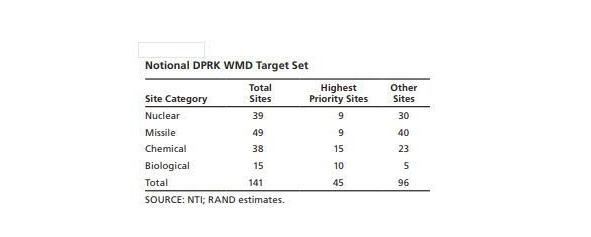
Table 1.1
then a minimum of ten battalion-sized TFs should be assigned to these nine sites. In the course of an operation, the U.S. commander might use these 12 WMD-E TFs
differently. For example, recall that in Figure 4.1 four of the priority nuclear sites and two of
the priority missile sites were located approximately 50 km from the Chinese border.
2. Operational environment and force requirements.
– WMD-E (Uncertain): This environment features a low threat level – consistent with the collapse of the DPRK regime and complete disintegration of the military. This might occur if a power struggle within the Kim regime resulted in open fighting that pushes an already dangerously unstable economy and society into chaos and collapse.
– WMD-E (Uncertain/High Threat)
This environment features a greater threat level – consistent with the collapse of the DPRK regime and the higher echelons of its military. As in the Uncertain case above, this environment might arise from a violent conflict within the DPRK’s leadership.
– WMD-E (Hostile):the basis of the Hostile environment is that U.S. entry into North Korea would be met with hostility by former regime and military members and perhaps many in the general public. In the internal collapse case, entering North Korea might be predicated on relieving a massive humanitarian catastrophe and controlling refugee flows – with securing WMD being necessary to prevent their transfer.
– WMD-E (Hostile/High Threat): This environment features the collapse of the DPRK regime but with the military remaining intact to a large extent. This environment might result from an internal regime struggle and collapse as before. But, in this case, the military manages to hold itself together.
We used these four environment descriptions to calculate the forces required for the missions shown in Table 1.2.
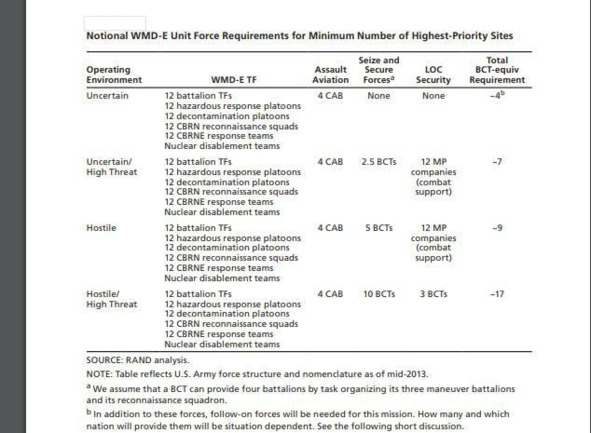
In each case, we assessed that a battalion-sized WMD-E TF was the minimum size needed to provide sufficient organic security at each site and that – at a minimum—12 such TFs would be provided (ten for priority nuclear sites, with two in reserve for pop-up targets).
3. Ratio of supporting forces to mission forces.
For operations in the DPRK, such support would most likely be provided by military units:
– 1.5:1: This represents the lower-end bound of OIF and OEF support for Army operations.
– 2.5:1: We use this ratio for our baseline. It represents the midlevel support ratios experienced in OIF and OEF.
– 3.5:1: This represents the high-end bound of OIF and OEF support.
We chose the 2.5:1 support ratio for our baseline estimate to support WMD-E operations in the DPRK, and show the parametric variants of ratios higher or lower than this number.
Question 4
– Sensitivity of Force Requirements to Operational Environments and Support Ratios
The ground force requirements are presented as a function of the operating environment (Uncertain or Hostile, and level of threat) and the assumed support ratio (low, midlevel, or high), broken out by the different elements of the WMD-E mission force.
Ground force requirements for WMD-E operations in our illustrative DPRK case are presented in Figure 1.2.
Estimated forces needed for WMD-E operations could be…
Answer
Figure 1.2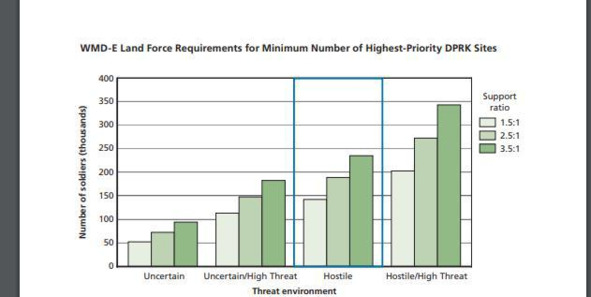
Example:• 73,000 troops for an Uncertain environment – with a lower bound of 52,000 if significant contractor logistics support can be employed and an upper bound of 94,000 if all support must be provided by the U.S. military • 148,000 for an Uncertain/High Threat environment – with a lower bound of 113,000 with more contractor logistics support and an upper bound of 182,000 with all U.S. military support.
Since we think that the environment is likely to be Hostile and that the intermediate level of support will be needed in the DPRK, our best estimate is a requirement for 188,000 U.S. ground troops.
That estimate could decrease to 148,000 if the risk of attack from DPRK military remnants decreases.
It could increase to 273,000 if the environment worsens to become High Threat. It is also useful to recall that these estimates are for the WMD-E mission only – they do not include force requirements for other missions, such as humanitarian assistance.
These different security levels pertain to the disposition of the DPRK security forces and any insurgent forces that might rise up.
Question 5
5. Observations on the DPRK Case Study
As described in this case study, WMD-E operations in the wake of a collapse of the DPRK.
1.What are the assumptions driving results?
– What does Your results suggest?
Answer
The WMD-E requirement is a nontraditional mission that creates a need for forces in addition to those required for joint operations, the force requirements of which might already be quite large.
The key assumptions driving results are the following:
– • the number and sizes of the WMD sites that are to be searched, the time needed to clear each site, and the priority and urgency of clearing them
– • the degree to which non-U.S. forces could or would be relied upon to service nuclear and nonnuclear sites
– • the ratio of support to mission troops
– • the degree of hostility in the operational environment, as well as the military threats WMD-E forces may face.
Our results suggest that even in cases where relatively favorable assumptions are made, the estimated U.S. forces required can still be quite substantial:
For example, in our DPRK base case, our estimate for the Uncertain environment – a relatively favorable environment for conducting WMD-E operations — required an estimated 73,000 troops,


